Everything you need to know about Robot Control System in one place
The use of robots is becoming increasingly widespread across various industries, including manufacturing, automotive, food and pharmaceutical, to name a few. These industrials robots are tasked with performing diverse operations, from moving objects, picking and placing to screwing and many more complex operations. The component that enables these operations and collaborations with humans and other robots is the robot control system.
TABLE OF CONTENTS
What is RCS?
Robot Control System (RCS) or Robot Management System (RMS) is the computer software program a business uses to manage and control joint actions of automated mobile robots (AMR). An RCS is a robust tool that aids in effective and efficient robots’ operations. It is responsible for commanding and regulating the robot’s behavior, including its movements, actions, and interactions with its environment.
Overall, a robot control system (RCS) combines hardware and software components to enable an AMR to perceive its environment, make decisions based on that perception, and execute physical actions to achieve its intended tasks. The complexity of the control system depends on the capabilities and sophistication of the automated mobile robot.
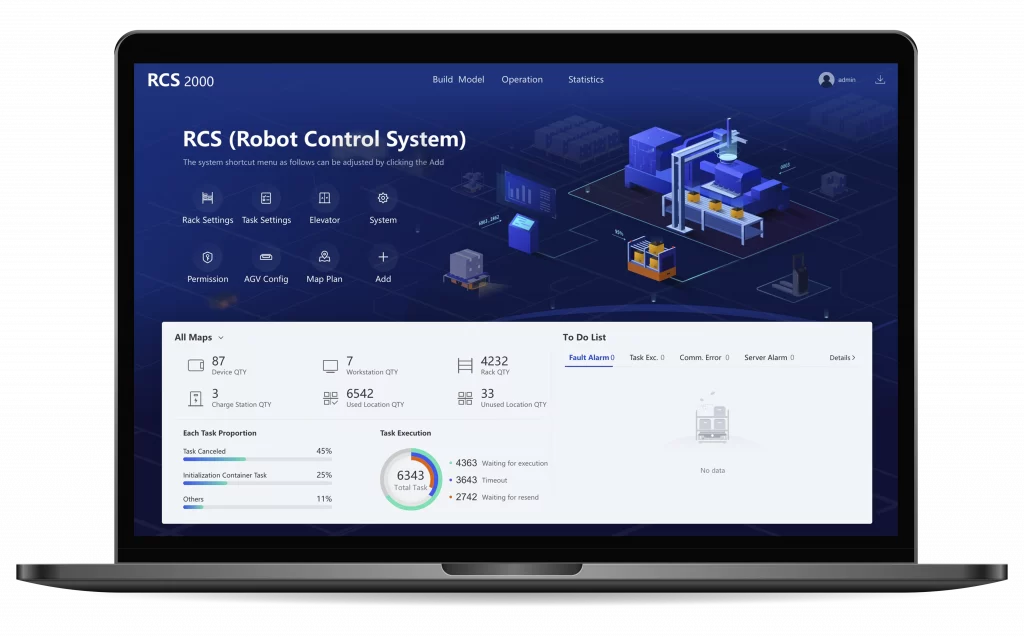
A robot control system is often integrated with other software components to enhance its functionality and enable seamless operation with external systems such as warehouse management system (WMS) or middleware.
By choosing the right robot software, backend operations can be optimized to eliminate error, identify cost-saving opportunities, and provide real-time information to your employees.
Why do we need an RCS?
Implementing a Robot Control System (RCS) can bring several benefits to businesses that utilize robots in their operations. Here are some key advantages:
RCS provides centralized management
An RCS provides a centralized platform to manage and control the robot fleet. It offers a unified view of all robots, their status, and operational data. This centralized management enables businesses to efficiently coordinate and monitor robot activities, ensuring smooth operations and optimized resource utilization.
RCS improves efficiency and productivity
An RCS streamlines robot operations and automates repetitive tasks. It allows businesses to optimize task allocation, schedule jobs, and coordinate workflows effectively. By automating tasks through the RCS, businesses can reduce manual effort, increase overall efficiency, and enhance productivity.
RCS handles scalability and flexibility
An RCS is designed to handle the scalability and adaptability requirements of businesses. As the robot fleet grows or business needs change, the RCS can accommodate the expansion and seamlessly integrate additional robots. This scalability and flexibility ensure that the RCS can meet the evolving demands of the business.
RCS enhance task planning and optimization
An RCS enables businesses to plan and monitor robot activities more effectively. It can allocate tasks based on robot capabilities, availability, and priorities. The RCS can optimize task sequences, minimize idle time, and reduce bottlenecks, resulting in improved task execution and overall operational efficiency.
RCS provide data collection and analysis
An RCS collects and analyzes data from the robot fleet, providing valuable insights into performance, utilization, and operational patterns. Businesses can leverage this data to identify areas for improvement, optimize processes, and make data-driven decisions to enhance performance and achieve better outcomes.
RCS allow remote monitoring and control
An RCS allows businesses to remotely monitor robot activities from a centralized location. This capability is particularly beneficial for businesses with multiple locations or distributed operations. Remote monitoring and control provide real-time visibility, enable prompt response to issues, and facilitate remote troubleshooting, reducing the need for on-site interventions.
RCS enable cost optimization
By optimizing task allocation, reducing errors, and improving efficiency, an RCS can help businesses reduce operational costs. The automation and coordination provided by the RCS can lead to savings in labor, energy consumption, and material waste, contributing to improved cost-effectiveness.
These benefits enable businesses to leverage robots effectively, streamline operations, and achieve higher productivity and competitiveness when considering choosing the right robot software.
Common types of Robot Control Algorithm
There are various types of robot control algorithm used in robotics, each with its own strengths, weaknesses, and suitable applications. Here are some widely used types:
- Proportional-Integral-Derivative (PID) Controller: This is a widely used robot control algorithm in engineering and automation systems. It is designed to regulate and stabilize the output of a system by continuously adjusting a control variable based on the error between the desired setpoint and the actual process variable.
- Fuzzy logic controller (FLC): FLC uses fuzzy logic to make decisions and control processes. Fuzzy logic is an approach to variable processing that allows for multiple possible truth values to be processed through the same variable. Fuzzy logic attempts to solve problems with an open, imprecise spectrum of data and heuristics that makes it possible to obtain an array of accurate conclusions.
- Neural network controller (NNC): The neural network-based control of mobile robots is usual to work with kinematic models of automated mobile robot to obtain stable motion control laws for trajectory following or goal reaching.
- Adaptive controller: This is a type of control system that can adjust its parameters or behavior in real-time to adapt to changes in the system or environment it is controlling. The purpose of an adaptive controller is to improve control performance and maintain stability even in the presence of uncertainties, variations, or disturbances.
- Robust controller: This is a type of control system design that is specifically designed to achieve robust performance when tuning control systems to high-level design requirements you specify, such as reference tracking, disturbance rejection, stability margins, and loop shapes.
The choice of robot control algorithm depends on the specific requirements of the task, the robot’s dynamics, available sensor information, and the desired monitor robot activities.
Common functions of RCS software programs
No two RCSs have the same functionality, user interface, integrations, and customizability. However, as you research potential RCSs for your business, there are baseline features that you should confirm are included.
Device Management
Configuration of Robot
RCS manages the configuration of affiliated robots, including: function, size, sensor configuration, communication protocol, collision, etc. Therefore, users can set up the robot system through RCS.
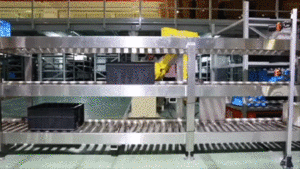
Real-Time Robot Monitoring
The RCS provides real-time monitoring of the robots’ status and performance. It collects data on AMR movements, sensor readings, battery levels, and other relevant metrics to ensure that the robots are operating as expected and within predefined thresholds.
Robot Control and Coordination
The robot management function enables control and coordination of the robots within the fleet. It allows for the issuance of commands, instructions, or high-level directives to individual robots or groups of robots, facilitating coordinated actions and behaviors.
Robot Health Monitoring and Maintenance
The RCS monitors the health and performance of the robots to ensure optimal operation. It tracks parameters such as battery health, motor performance, wear and tear of components, and other indicators to schedule maintenance tasks and address potential issues proactively.
By effectively managing the robots within the fleet, the robot management function in an RCS optimizes AMR utilization, enhances operational efficiency, and facilitates proactive maintenance and troubleshooting. It plays a vital role in ensuring the overall effectiveness and productivity of the robot control system.
Layout Management
Environment Mapping
The control system may include features for mapping and modeling the robot’s operating environment. This involves using sensors, such as cameras or lidar, to collect data about the surroundings and generating a representation of the environment. This mapping information can be used for obstacle avoidance, task planning, reliable and safe navigation for AMR.
Layout Visualization
The robot control system provides visual representation and layout visualization tools to display the layout of robots, objects, and the overall operational environment. This helps operators or supervisors to have a clear understanding of the spatial arrangement and configuration of robot, facilitating layout planning and adjustments.
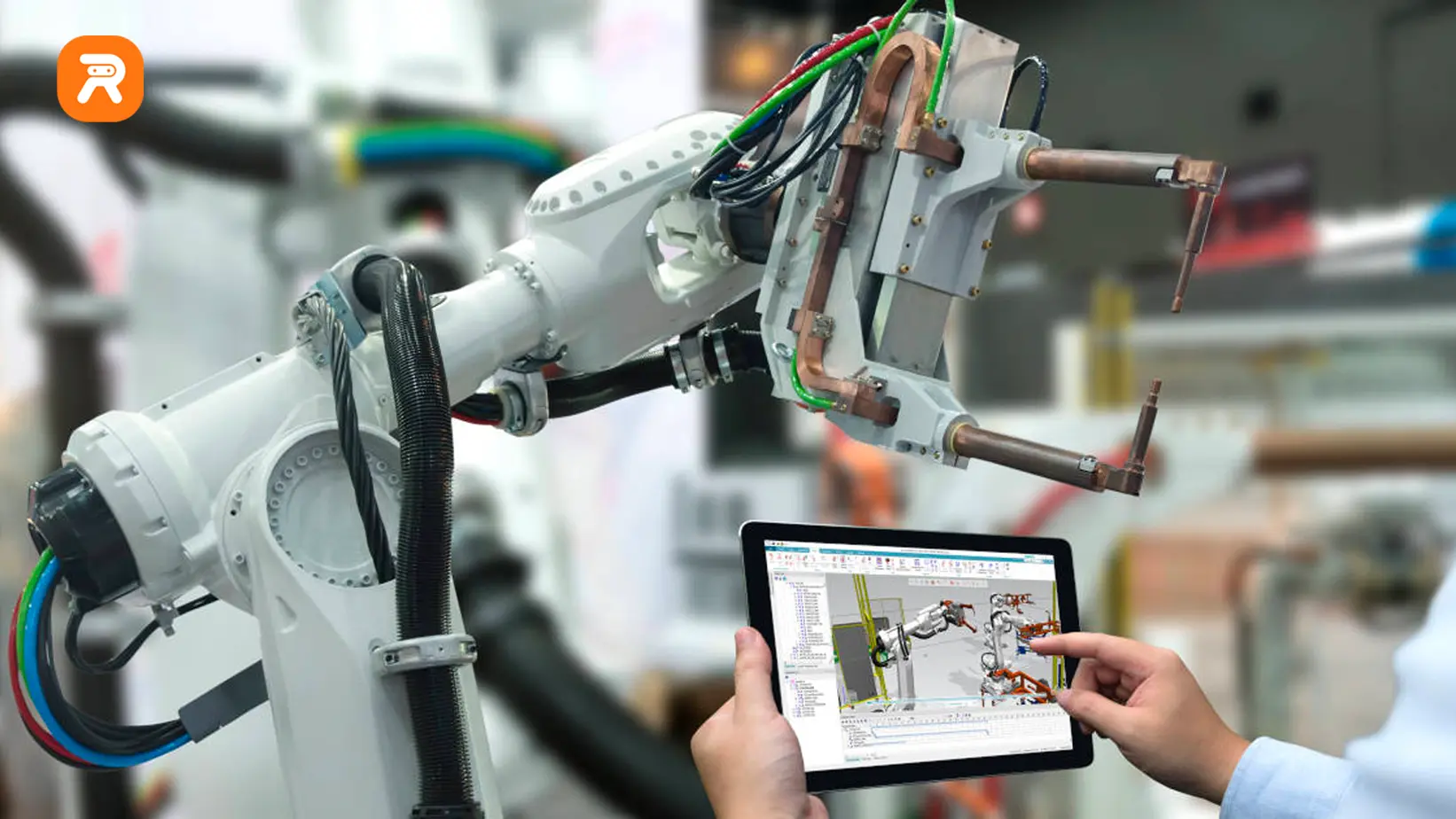
Layout Optimization
The control system incorporates optimization algorithms and techniques to optimize the layout of robots within the workspace. It can suggest or automatically adjust the placement and arrangement of robots to improve operational efficiency, minimize robot travel distances, reduce interferences, or optimize resource utilization.
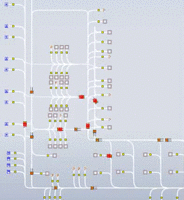
Successful robot operations start with choosing the right robot software. If the robots are disorganized, with a layout that’s not optimal for picking and packing, time and money are wasted during the fulfillment process.
Service Management
Service management in a robot control system refers to the processes and mechanisms involved in managing the connectivity and interoperability of the robot with other devices or systems. Some key aspects of service management related to device connectivity may be device integration, configuration of robot, data exchange and connectivity management.
This includes establishing communication protocols, interfaces, and data exchange mechanisms to enable seamless interaction between the robot and external devices such as sensors, actuators, control systems, or other automation equipment.

Charge Management
Battery Monitoring
The robot control system continuously monitors the battery status of each robot in the fleet. It tracks parameters such as battery level, voltage, temperature, and charging cycles to ensure optimal battery health and performance.
Charging Scheduling
The control system allows for the scheduling and coordination of continuous charging for AMR. It optimizes the charging schedule to minimize downtime while ensuring that robots have sufficient battery power for their assigned tasks. Charging schedules can be adjusted based on operational priorities, energy costs, or specific requirements.
Charging Optimization
The control system incorporates optimization algorithms to optimize the continuous charging process for AMR. It considers factors such as charging rates, energy costs, and available charging resources to ensure efficient use of charging infrastructure and minimize overall charging time.

With continuous charging for AMR functionalities in a robot control system, businesses can ensure the efficient use of battery power, minimize downtime due to charging, optimize energy consumption, and enhance the overall productivity and reliability of the robot fleet.
Task Process
This function is a crucial component of a robot control system that manages the execution of tasks or workflows within a robotic system. It provides the necessary framework and mechanisms to define, schedule, and monitor the execution of tasks, ensuring smooth and efficient operation.
Task Definition
The control system allows users or operators to define and specify the tasks that need to be performed by the robots. This may involve defining task parameters, objectives, priority levels, and any constraints or dependencies associated with the tasks.
Task Allocation
Once tasks are defined, the control system allocates the tasks to specific robots based on factors such as availability, capabilities, proximity, and task requirements. The system considers the current status and workload of each robot to ensure efficient task allocation.
Error Handling and Recovery
If errors or exceptions occur during task execution, the control system incorporates error handling mechanisms to handle and recover from such situations. It may include error detection, error notification, and automated or manual recovery procedures to ensure the smooth continuation of the task process.
Task Completion and Reporting
Once a task is successfully completed, the control system updates the task status, records completion time, and provides reports or notifications to relevant stakeholders. This helps in tracking task progress, analyzing performance, and generating insights for future improvements.
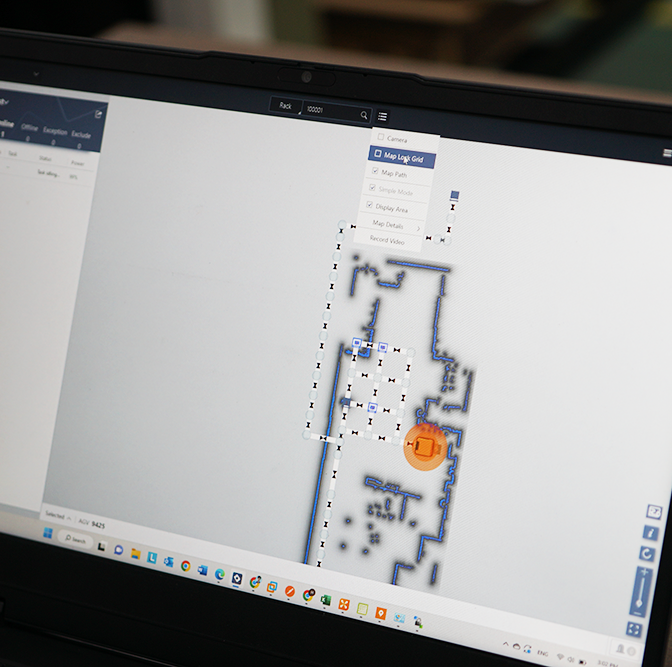
Path Planning
Efficient path planning is essential for optimizing robot movements and maximizing productivity. A sophisticated robot control system should include advanced path planning algorithms that consider factors such as obstacle avoidance, energy efficiency, and task prioritization. By generating optimal paths and trajectories, businesses can minimize travel time, collisions, and unnecessary movements, thereby improving overall operational efficiency.
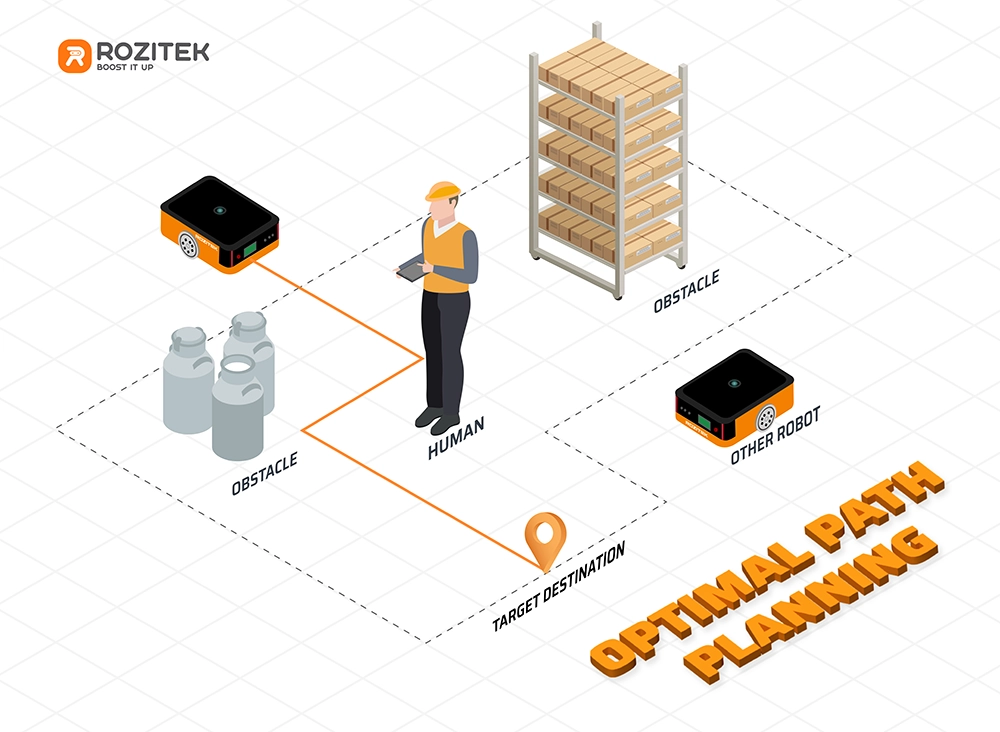
Statistics Function
Businesses rely on statistical data to gain insights into their operations and make informed decisions. A robust robot control system should provide statistical analysis capabilities to track key performance indicators (KPIs), such as production output, cycle times, error rates, and energy consumption. These statistics enable businesses to identify bottlenecks, analyze trends, and optimize workflows for improved productivity.
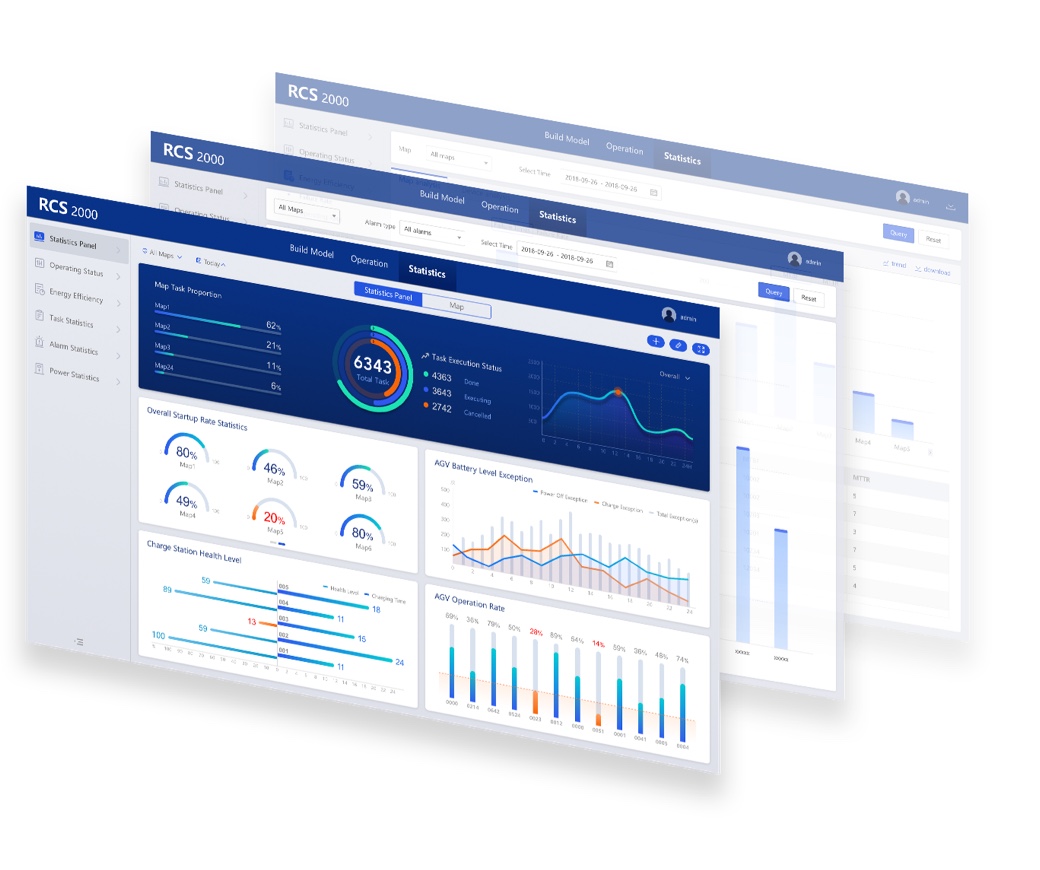
Alarm Management
The alarm management function of a robot control system (RCS) is responsible for monitoring the system’s status and generating alarms or notifications when certain conditions or events occur. It helps in identifying and addressing issues or abnormalities in the robot’s operation or environment.
Once an alarm is acknowledged and confirmed, the RCS guides the operator or maintenance personnel in resolving the underlying issue. This may involve providing instructions, indicating affected components, or suggesting corrective actions to rectify the problem.
Besides, businesses should carefully consider other factors to ensure the chosen system aligns with the unique requirements and challenges of the business before making a final decision on a Robot Control System (RCS). One option to consider is the RCS offered by Rozitek. With a reputation for innovation and excellence in the industrial robot industry, Rozitek has built a strong track record of delivering advanced solutions to meet the evolving needs of businesses.

FAQs
What does RCS stand for?
RCS commonly stands for “Robot Control System”, it is sometimes used interchangeably with “Robot Management System” (RMS).
RCS refers to a software or hardware system that manages and controls the operations of robots.
The RCS provides the necessary tools and functionalities to define, schedule, monitor, and coordinate tasks performed by robots, ensuring efficient and effective operation within a given environment.
The RCS can include features such as task planning, motion control, sensing and perception, communication with robots, and integration with other systems or devices.
How many autonomous mobile robots can be managed in one RCS?
The number of autonomous mobile robots that can be managed in one Robot Control System (RCS) can vary depending on the capabilities and limitations of the specific RCS and the complexity of the tasks being performed.
Modern RCSs are designed to handle multiple robots simultaneously and can typically manage a considerable number of automated mobile robots.
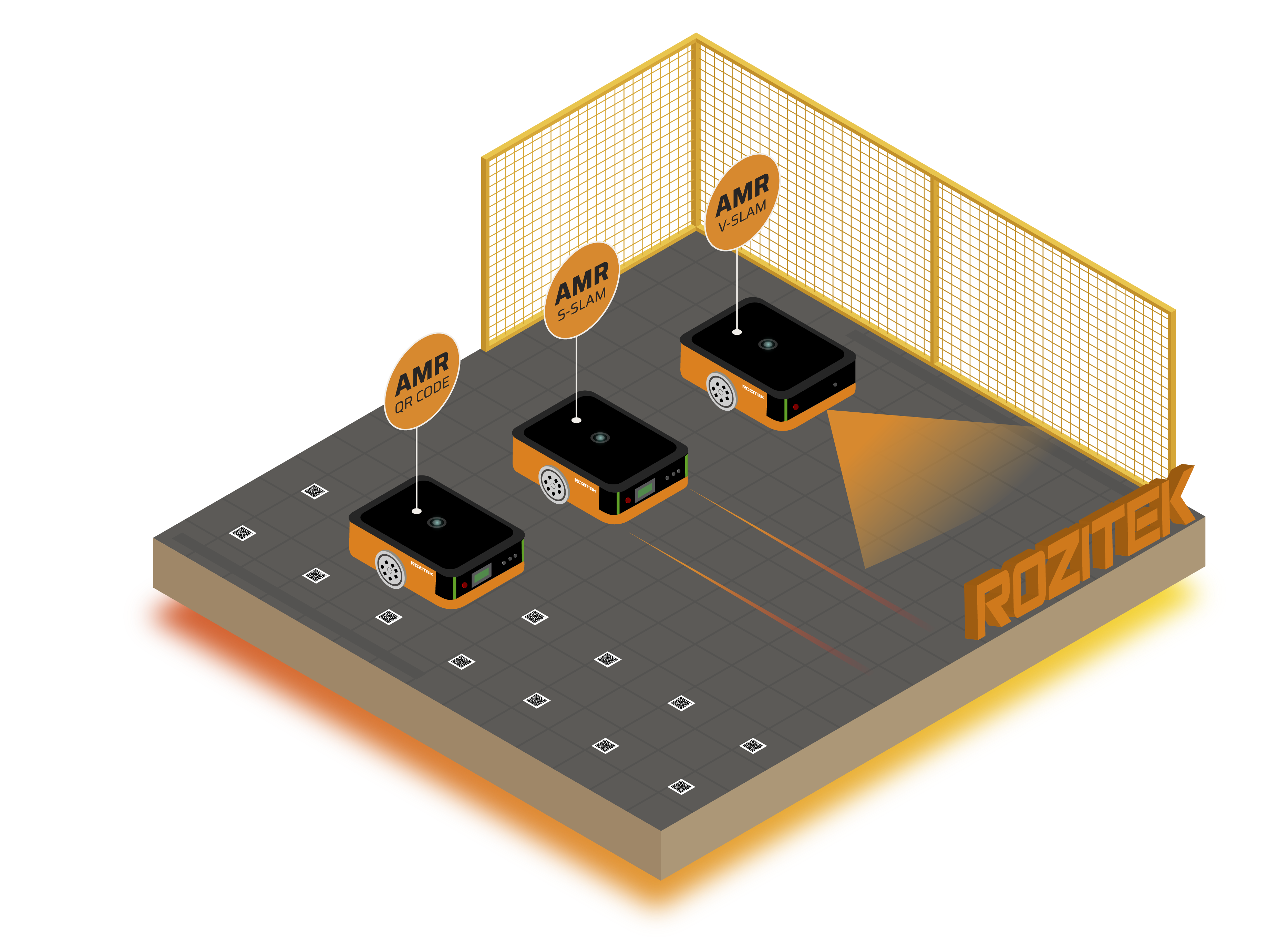
Can an RCS integrate with existing warehouse management systems?
The integration between an RCS and a warehouse management system (WMS) typically involves data exchange and communication protocols. The RCS can receive task assignments, inventory data, and other relevant information from the warehouse management system (WMS), allowing it to plan and execute robot tasks accordingly. Conversely, the RCS can provide real-time updates on task status, completion, and any exceptions or issues back to the warehouse management system (WMS).
While integration between a Robot Control System (RCS) and a Warehouse Management System (WMS) is generally possible, there may be cases where integration is challenging or not feasible:
- An RCS and a WMS may use different communication protocols, data formats, or interfaces that are not easily compatible.
- Some RCS or WMS solutions may have limited customization options, making it difficult to adapt the systems to each other’s requirements.
- In some cases, the RCS and WMS may be developed by different vendors who may not have a pre-existing integration solution or partnership.
With high flexibility, Rozitek’s RCS offers a promising solution to overcome integration challenges between an RCS and a WMS. Our software ensures seamless communication between systems, bridging the gap between different protocols and data formats. Additionally, we provide ongoing support and customization options for RSC, allowing for tailored integration solutions. By integrating with a warehouse management system (WMS), the Robot Control System (RCS) can leverage the existing infrastructure, workflows, and data within the warehouse. This integration enables efficient task allocation, inventory management, and resource utilization.
Can I build my own Robot Control System (RCS)?
Yes, businesses have the option to build their own Robot Control System (RCS) if they have the necessary expertise, resources, and requirements. Developing an RCS in-house allows businesses to have full control over the system’s functionality, customization to ensure compatibility with existing systems, and integration with their specific robotic applications.
However, the real challenges that come with building robotics software can seem too great for many businesses to tackle. Building an RCS requires a deep understanding of robotics, software development, and system integration. Alternatively, businesses can also consider leveraging pre-existing commercial RCS solutions or partnering with robotics companies that offer RCS platforms tailored to their specific needs.
If you are looking for a quicker and more cost-effective solution with customizable functions, Rozitek’s RCS can be a viable option. Rozitek offers an existing RCS platform that can be tailored to your specific requirements and integrated with your robotic applications. Especially, Rozitek can provide ongoing support and maintenance service. We can provide assistance with troubleshooting, bug fixes, feature enhancements, and ensuring compatibility with existing systems.
Is there customization option for RCS for specific applications?
Yes, an RCS can be customized to suit specific applications. This flexibility enables businesses to optimize the system’s functionalities, interfaces, and algorithms to match their specific application needs.
Rozitek provides customization options for RCS to the unique requirements and workflows of different industries and use cases of business
What support and maintenance service is available for RCS?
Support and maintenance service for RCS typically vary depending on the provider and the specific system in use. It’s important to review the specific support and maintenance offerings provided by the RCS provider and consider factors such as availability, response times, and the extent of coverage to ensure that the support aligns with your organization’s needs.
Rozitek’s support and maintenance service for RCS includes technical support, software updates, documentation and training, customization support and maintenance service for RCS, system monitoring and maintenance, ensuring smooth operations and addressing any issues that may arise during the deployment and use of the system.
How do I choose the right robot software for my needs?
When choosing an RCS, consider factors such as functionality, scalability, compatibility with existing systems, support, cost, and specific requirements of your applications. It’s recommended to evaluate multiple options, seek recommendations, and consult with experts to make an informed decision.
If you have any questions about robotic control systems, feel free to reach out to our team of highly qualified and experienced engineers!
References:
https://medium0.com/@admin_71435/most-common-types-of-controllers-in-robotics-766e80eb0169
https://www.mathworks.com/help/robust/robust-controllers.html
https://apmonitor.com/pdc/index.php/Main/ProportionalIntegralDerivative
https://citeseerx.ist.psu.edu/document?repid=rep1&type=pdf&doi=3dea684543ecf65f3ed01bd9fb0bfcb589743886

Industrial Revolution: From Steam Power to Artificial Intelligence
The Industrial Revolution is one of the greatest turning points in human history, reshaping the entire economy, society, and civilization.
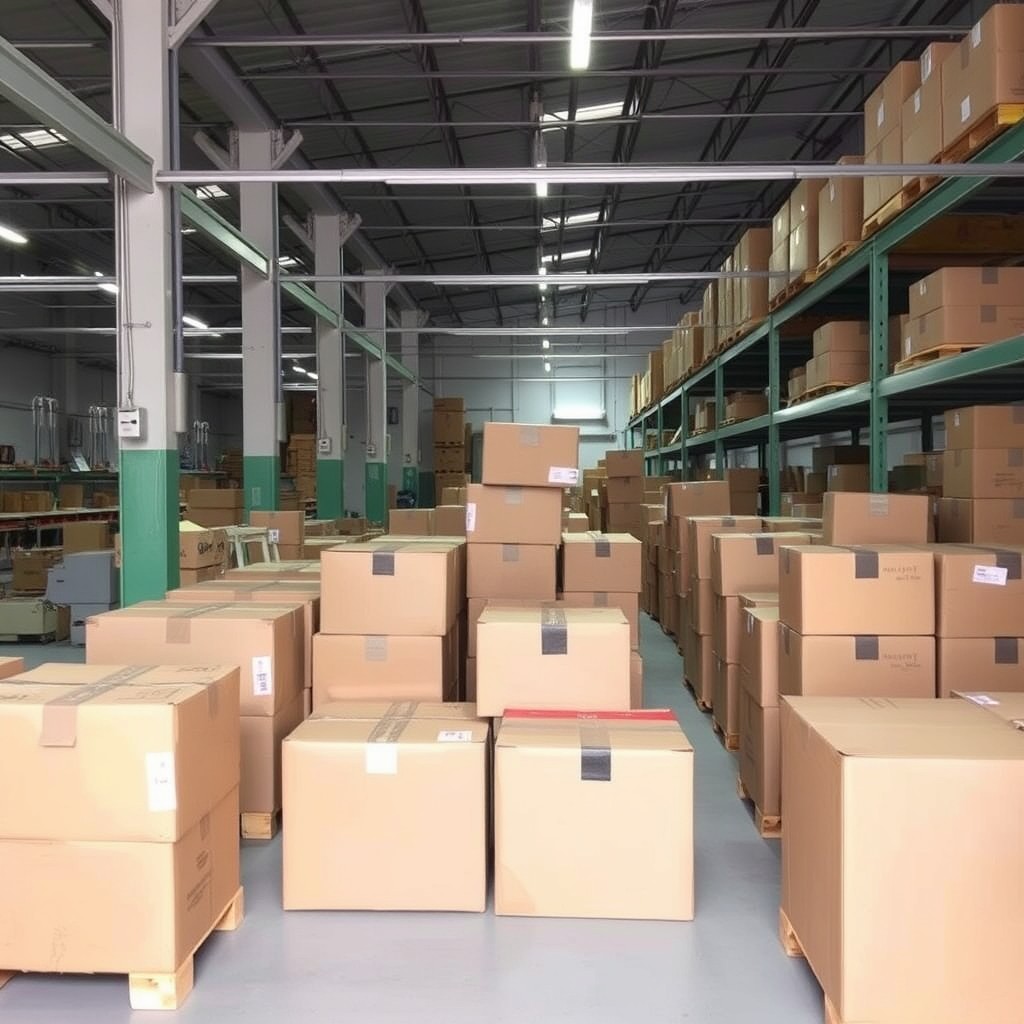
Revolutionizing Warehouses with BEAST ROBOT (CTU) Technology: Optimizing Warehouse Management Efficiency with AGVs and Smart Warehouse
Contents List In the fast-evolving world of warehousing, automation is transforming industries, and one standout innovation is the BEAST ROBOT.

How to Choose the Right AGV System for Your Factory: Rozitek’s Approach
Selecting the ideal Automated Guided Vehicle (AGV) system is crucial for achieving streamlined operations, improved efficiency, and long-term cost savings.
